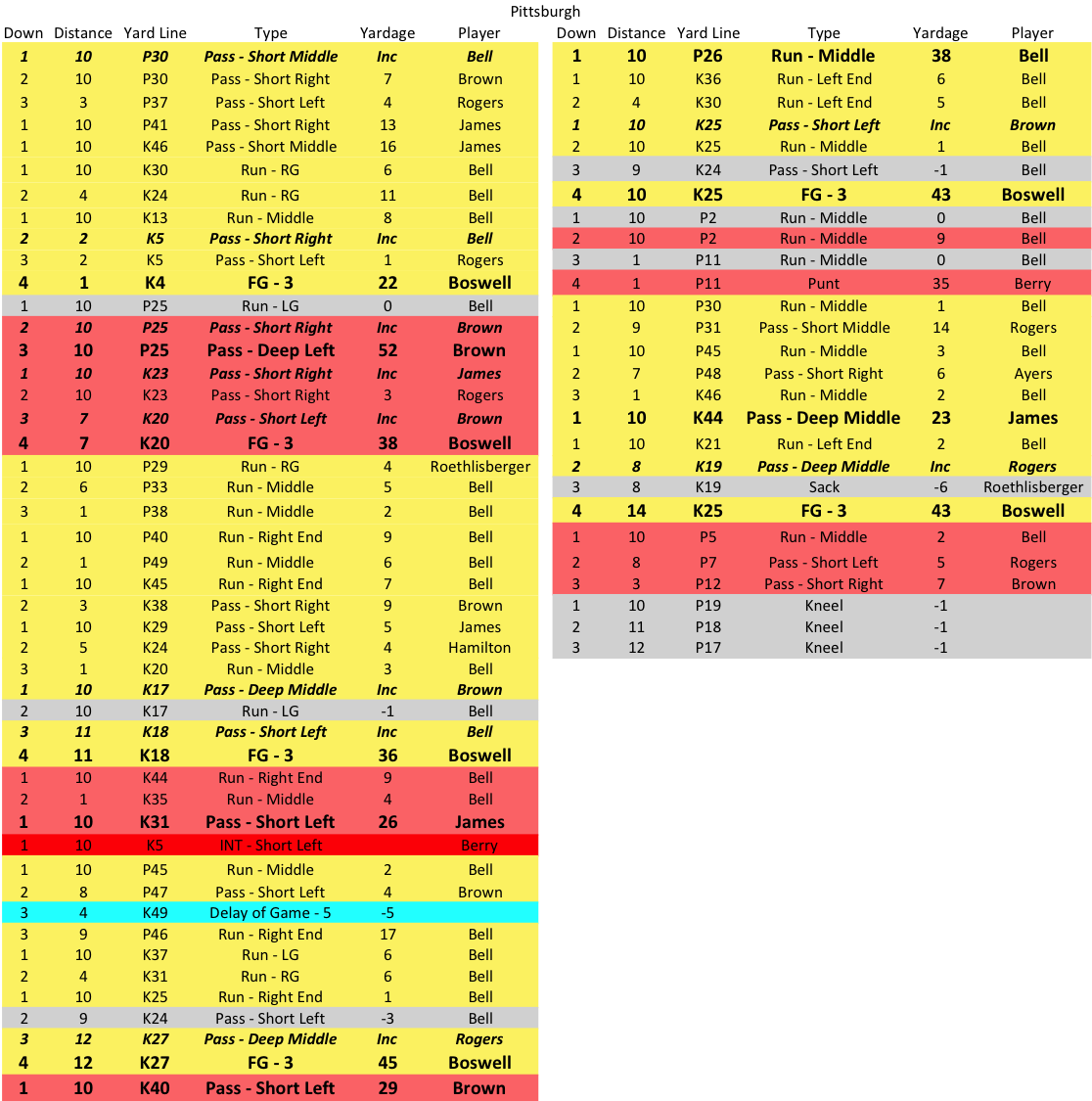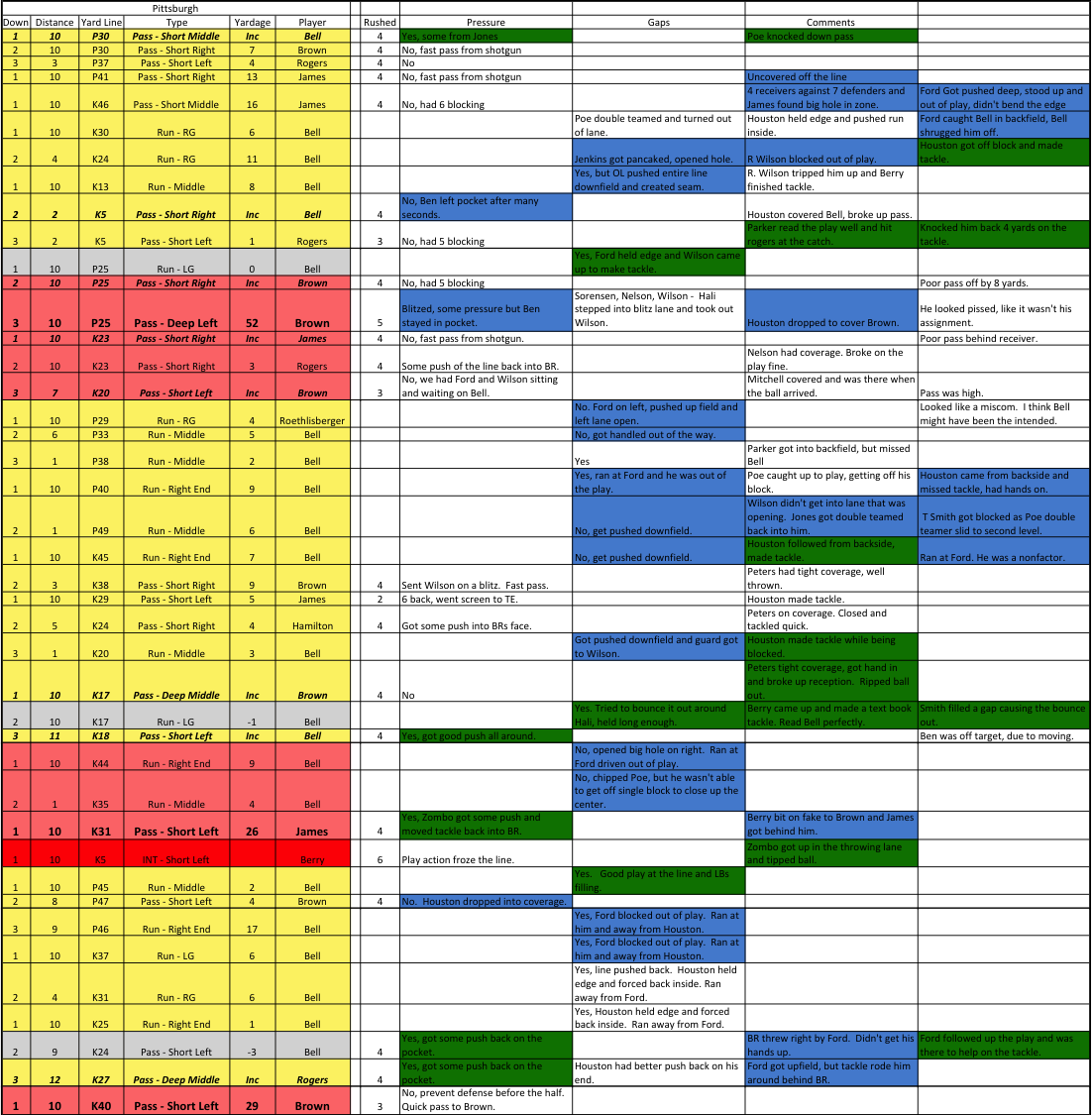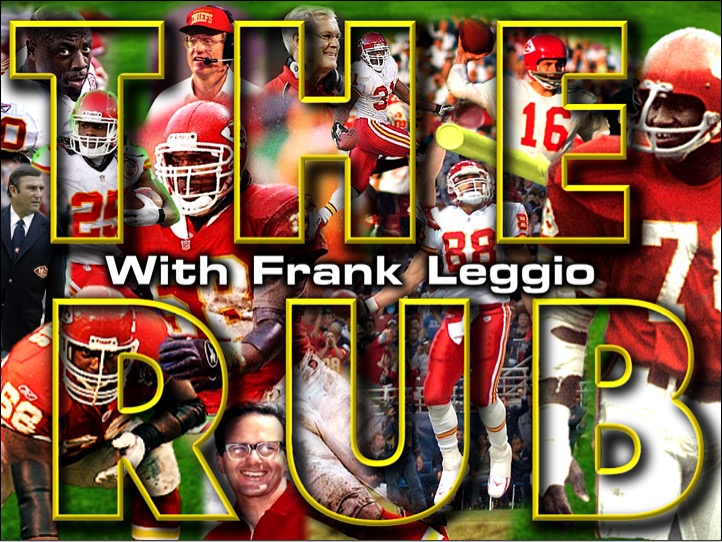 Kansas City vs. Pittsburgh:
Kansas City vs. Pittsburgh:
![]()
How Good Was
![]()
the Defense?
![]()
Frank Leggio

Based on some recent exchanges on our comments section and after reading many other articles, I decided I wanted to review the defense from the Pittsburgh game. It seemed there were some differences of opinion, varying from… the Chiefs defense did a great job against the “high powered Pitt offense”… to some that were more critical of the performance. I think I fell closer to the latter than the former.
![]()
As I remembered, K.C. was pretty vanilla and ran the ever-popular Bend-But-Don’t-Break — BBDB — defense. I couldn’t recall a lot of attacking the Pittsburgh offense. Instead, I felt like the Chiefs approached every play with an attitude of… let’s keep the play in front of us and don’t give up the big play.
![]()
While I do think it is quite an accomplishment to take a team that hung five touchdowns on you in the first meeting to… six field goals, that obviously wasn’t enough.
![]()
Since I am more of a data-driven kinda guy, I watched every defensive snap again to try and capture some information that was a little more quantifiable. For each play, I focused on the defensive line and noted the following:
![]()
Passes– number of plays and where they went, number of rushers, whether I thought K.C. created any pressure, and anything that stood out
Rushes– number of plays and where they went, whether we held gaps, got pushed back, and again… anything that stood out
![]()
First: the Big Picture Numbers
The Defense was on the field for 34 minutes, created 1 turnover, gave up 20 first downs, wasn’t flagged for anything, gave up 389 total yards (218 passing & 171 rushing), gave up 0 touchdowns and 6 field goals.
![]()
The Defensive line (Houston, Poe, Jenkins, Reyes, Ford, Jones, Zombo, Nunez-Roches) made a total of 23 tackles on the 66 plays. I know that Houston, Ford, and Zombo are technically linebackers, but they were basically lining up at defensive end all night, so I am including them here. Considering that there were 34 rushes, that means 11 of them got beyond our lineman.
![]()
On the 28 pass plays, the Chiefs generated a grand total of 2 quarterback hits and 1 sack, but also generated 4 passes defensed. Poe, Zombo, and Jones tipped some balls, one of which was intercepted.
![]()
From the high-level there were definitely some good things (no touchdowns or penalties and a turnover) and some not so good things (six field goals, 34 minutes and 1 sack).
![]()
Breaking Down the Plays: a Spray Chart
I also wondered if Pittsburgh was attacking any particular area more than others, so I charted where all the plays went against K.C.
![]()
Below is the table, and you can see they ran and passed about even, but almost 38% of the plays were runs up the middle for a total of 118 yards. After that, there was a concentration of pass plays, short left and right, for a total of 36% of the plays and 119 yards. Other than those groupings, there were a few shots down the middle and a few rushes to the ends.
![]()

![]()
This isn’t really surprising, considering the Chiefs were weak against the rush up the middle. I’d also say that they took advantage of the short passes, since we were in BBDB mode.
![]()
Play by Play Review
Like I did with the Chiefs last week, here is the Pittsburgh offense, so we can see how the defense did.
![]()
Key
- Bold and italics are incomplete passes
- Grey are negative or zero yard plays
- Dark red highlight is a turnover
- Bold and larger are scores
- Teal is a penalty
- Other yellows and reds break out the series
![]()

![]()
Some higher level observations:
K.C. created 6 negative plays (excluding the kneels), 10 incompletions, 1 interception, and no touchdowns. We also gave up six field goals, and 4 plays over 20 yards.
![]()
This next table shows the plays again, but with my observations next to them. I have excluded the field goals, punt, delay of game, and kneel downs.
![]()
I colored cells green where I thought we did something well and Blue where I thought we played poorly. The uncolored cells were just as expected.
![]()
First Half
![]()

![]()
Second Half
![]()

![]()
![]()
What I repeatedly saw on rushing plays was the Chiefs D-line getting pushed back on running plays with just enough of a seam for Bell to get through. When they rushed to an end, it was typically at Ford and he was fairly easily taken out of the play.
![]()
On the 32 passing plays, K.C. rushed 4 players 22 times, 3players 5 times, 5 players 3 times, 6players 1 time, and 2 players 1 time. However, during those plays, I think I only observed two blitzes. I rarely saw Hali involved and Houston seemed to drop into coverage more than rush the QB. That left our only real threat for a pass rush to be Dee Ford. He was repeatedly man handled and ridden out of plays.
![]()
When the Chiefs had good plays, you could see a push from the line and some hands up in throwing lanes. Those plays weren’t frequent enough to get Pittsburgh off the field though.
![]()
In Summary
It really seemed like in addition to the Chiefs weakness against the rush from injury, we created a weakness against the pass by not dialing up blitzes and basically relying on Ford to create the pressure.
![]()
During the regular season, we saw enough aggressive play calling to create pressure and force turnovers. Here it looked like they wanted the defense to play it safe against the big play and let the offense and/or special teams put up points. The problem with this is… the defense only forced one punt, the kickoff return team forgot how to block, and the offensive execution wasn’t up to the challenge.
![]()
The conservative play calling took away the area the Defense excelled at during the year – turnovers. Many of these turnovers were also accompanied by points in Pick-Six and the first ever Pick-Two fashion. I realize it is in hindsight, but the way they approached fixing the problems from the big loss early in the season seem pretty flawed.
![]()
A big credit goes to the Pittsburgh play calling and the job their offensive line did in winning the battles. They kept Ben Roethlisberger pretty clean and gave him time to work.
![]()
What do you guys think? See any other things in my notes?
![]()
Until next week, there’s The Rub!
![]() .
.


